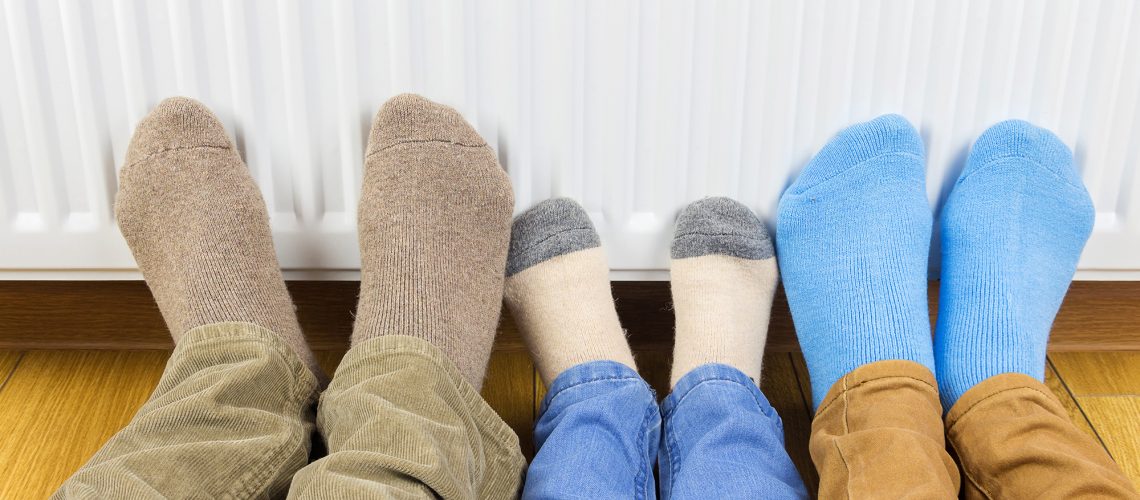Heating your home is a priority. We need warmth for a decent quality of life. We need a reliable source of heat to survive. With that in mind, it is surprising how much we take our central heating for granted until it breaks down of course! Can you imagine what life would be like without central heating? Some of you may have experiences with living in these conditions, using alternative sources of fuel to provide heat. This blog talks about the journey central heating has been on to arrive at this technologically advanced world, where our heating can be activated by a touch a button, on a device on the other side of the world.
Fire – Our First Form Of Heating
The input hasn’t changed a great deal; the fuel may be different but in most cases, in the UK we burn something to get heat. In our early recorded history, humans used fire for our source of heat. Fuel in the form of wood was abundant in all parts of the country. As we became more intelligent, our means of heating started to become more sophisticated. We started to experiment more with fire and how to use the heat. The earliest forms of central heating used air to heat the property from a fire.
Early Central Heating
As we look back through history, central heating has been around in one form or another for thousands of years. Romans constructed houses with heating ducts. These transferred warm air from a heating source located under the property through the ducts and out via a chimney. This system provided excellent warmth and also circulated air making living conditions much healthier. Strangely, Britain never adopted this type of system. Instead, we resorted to fires in rooms, which is a step back to the early human days. Changes arrived in the 19th Century with the invention of the radiator.
Central Heating As We Know It
Radiators are the most common form of heating your home in Britain. The room radiator we are familiar with was invented in Russia in the 1850s and you can find out more here.
In the early days of modern wet central heating (using water to transport heat), water circulated using gravity. This immediately throws up problems when working out how to heat each room. For a gravity system to work, it requires the heat source to be located lower than the radiators. Unless the heat source is in the basement of the property, only the upstairs would be heated. In early examples, many homes still had traditional open fires and stoves which could heat the lower part of the house. The upstairs could now benefit from the gravity system, which could also be used to heat stored water for washing and bathing.
Efficiency Improvements
Manufacturers chose to make the early radiators from cast iron . They provide heat to individual rooms without the smoke and live fire issues of an open fire or stove. The heavy weight meant they were floor mounted. Plus, they took a lot of time and energy to heat up. As modern central heating became popular, the design of radiators improved, making them lighter, more efficient, and cheaper to manufacture. These improvements meant the radiator could be wall-mounted instead of fixed to the floor; a saving on space in each room is welcome to the average household. Current radiators hold very little water in comparison to the early versions, but the most significant improvement was to include a circulating pump to the radiator system.
Modern Controls and High Efficient Radiators
Central heating pumps could now provide radiators on all floors a supply of hot water. Heat could be distributed to any part of the house with a pumped system, rather than relying on gravity, plus the radiators would heat up much quicker. The early versions of pumped central heating connected the pump electrically, to a room thermostat. As soon as the thermostat called for heat, the pump switched on. Simple, yet very effective and not too dissimilar to today’s systems.
As the system technology improved, so has the efficiency of our radiators, with convector fins adding surface area to the heated panels. Our current systems use automatic water valves to divert the flow around different parts of the system. Each valve is usually controlled by a thermostat and timer (and sometimes via a heating app), providing ultimate control of heating your home today. Thermostats connected to the radiators regulate how much heat the room needs and automatically adjusts the flow into the radiator.
If you’d like advice or a quotation for central heating for your home, please get in touch here.

